|
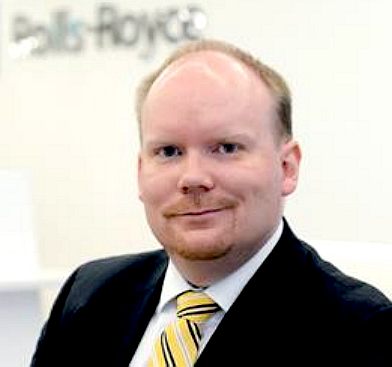
Oskar Levander, VP Innovation, Engineering and Technology
- Rolls-Royce
MARINE
LINK - VP ON ALTERNATIVE FUELS - AUGUST 2014
Experts predict the internal combustion engine will not lose its dominant position any time soon, but developing engines to meet ever tighter emission limits is costly. So what role are alternative fuels likely to play in the future? Oskar Levander, VP Innovation, Engineering and Technology at Rolls-Royce Marine shares his views.
Although nobody can predict how long our oil reserves will last, we can forecast with certainty that demand for it, and with it the price, will continue to stay high.
For vessel operators fuel now makes up an increasing proportion of costs. And prices will rise next year, with the shift to low sulphur distillate fuel, assuming that a 0.5 per cent global sulphur cap comes into effect in 2020. That’s in addition to the 0.1 per cent sulphur requirements that are expected to be enforced in Emission Control Areas (ECAs) in North West Europe and North America from next year.
Owners operating almost exclusively within these zones have been seeking solutions to these issues for some time. They are the main reasons owners, designers and equipment providers like Rolls-Royce have been investing heavily in maximizing ship and propulsion systems efficiency. These new rules mean there is no alternative but to switch to more expensive low sulphur distillate fuel, which is compounded by supply worries, move to engines that can burn more environmentally friendly fuels, or fit appropriate abatement technologies.
Until now, fuel selection has mainly depended on two factors, ship size and ship type. Large vessels have predominantly used HFO, with market sectors, such as offshore support vessels favouring more expensive fuel grades.
In the future fuel selection will have many more dimensions. In addition to size and type, operating region and pattern will play a larger role in ECAs for low sulphur fuels. Pricing and availability also varies from one region to another. Vessel range impacts fuel feasibility due to space and cost constraints. So, for two similar ships with different operating profiles one may opt for
LNG while the other will select diesel. In fuel selection there is no longer a simple right choice.
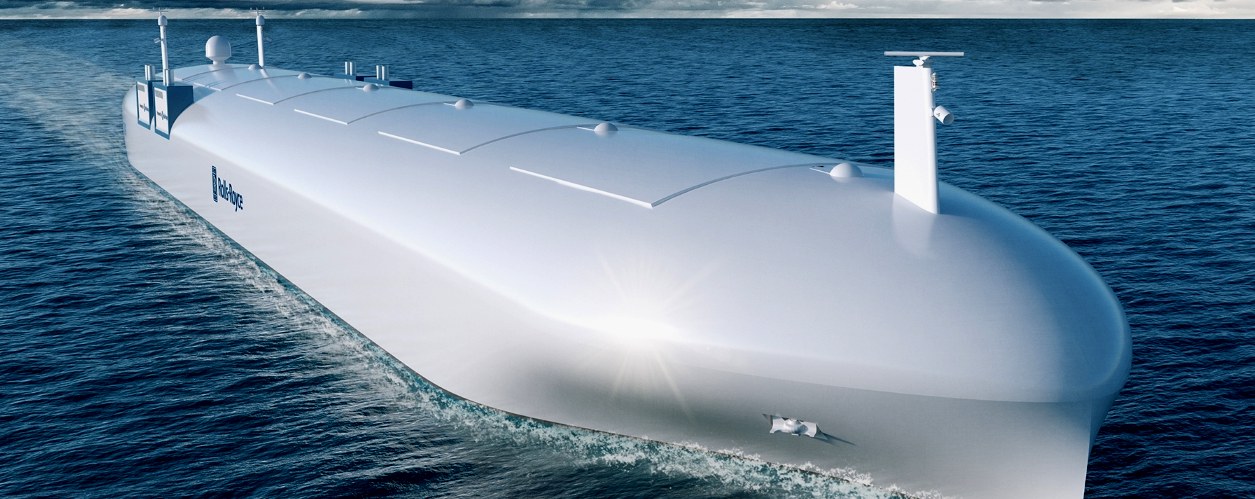
ROLLS
ROYCE - This famous maker of jet engines and marine craft have been
working on making autonomous ships a reality with the European Commission
funded HP7 MUNIN
project - the aim being to save fuel by cruising so-called green shipping
lanes. You are likely to be able to speak to a representative at the
Autonomous Ship Technology Symposium at the RAI, Amsterdam in June of
2018. The next question is will there ever be a truly eco
Rolls-Royce ship. One that runs on energy from nature? That is a difficult
one. Merchant operators are used to running ships with cheap fuel by the
ton. It's bad enough putting your head above the parapet by developing
unmanned systems, let alone go the whole hog with a clean ship of the
future.
THE MAIN ALTERNATIVES
Today HFO powers 90 per cent of the world’s ships and marine gas oil or diesel the rest. Over the last 10 years LNG has emerged and is now gaining acceptance, mainly due to attractive pricing and its environmental benefits. The industry has now become more accustomed to it. In the early days the concern was safety, now it is developing adequate bunkering infrastructures within the ECAs. With the move to LNG by a number of operators, infrastructure development is moving ahead at a rapid pace.
I have long held the view that LNG will be the fuel of the future for a growing number of ships.
There is no doubt that gas will be available much longer than mineral-based fuels. Engines that burn it comply with the emission limits which
diesel engines can only meet with the help of expensive exhaust
after treatment. Gas engines run cleaner and quieter. Pure gas installations simplify the machinery fit, resulting in a very lean and cost efficient installation, when diesel and auxiliary systems are removed.
Discussions around Methanol as a marine fuel are cropping up more frequently. It is available in other industries and we are used to handling it as a cargo offshore. But there are issues as it is toxic and requires twice the space of diesel. As with anything, it is economics that will either favor or reduce its wider take-up. The price is what will matter. Currently it is running some 10-15 years behind LNG, but is not likely to play as big a part in the fuel mix as LNG.
Dimethyl ether (DME) is another fuel linked to Methanol, but likely to play a smaller part. It is a very clean burning fuel and requires pressure tanks onboard.
Biofuels are a different story. Here we have many different types and no binding specification. Although today’s engines are suitable for many grades, the lack of standards makes uptake difficult, hence the need to mix with fossil fuels. They are also limited by production, due to the impact on the world’s ability to produce food. So as a marine fuel it is only likely to appeal to niche markets. But this could change when we move to the next generation of biofuels.
Hydrogen is unlikely to become a primary fuel for ships any time soon. It makes no sense to use LNG or electricity to produce it. These feedstocks should be used directly as the fuel unless there is an abundant supply and turning it into hydrogen would be useful for energy storage. So H2 is only practical in a handful of countries with surplus onshore energy.
What are the alternatives?
Biodiesel
Derived from vegetable oil which is transesterified with roughly ten per cent methanol and then purified. The resulting fuel is very similar in its combustibility to conventional diesel fuel. However rising food prices have raised doubts over the viability of production in the long term. A breakthrough is expected with the arrival of second generation diesel, when it can be made economical. In contrast to today’s biodiesel it uses the entire plant, so that three times the quantity can be produced from the same crop acreage. Its storage lifetime and NOx emissions are still too high to comply with forthcoming regulations.
Methanol
Is readily available and produced from feedstocks that include natural gas, biogas,
coal and biomass.
The environmental benefit depends greatly on the method of production. Transport and distribution is similar to gasoline and ethanol.
It is toxic and its flammability range is greater than diesel fuel with a lower flash-point and it is not yet covered by international regulations.
Conversion costs are lower than for LNG. Pressurised tanks are not required. Storage volume is roughly twice that required for MGO. Combustion produces no SOx and low particulates, but NOx levels do not comply with IMO tier III when powering a diesel.
Dimethyl ether (DME)
Produced from the same feedstocks required for methanol production. It can also be made from methane that occurs from decomposing
cow and chicken manure, rotting grass clippings and landfill gas.
Its properties are similar to LPG and can therefore be transported and stored in a similar way.
It is non-toxic and burns cleanly producing no SOx, with reduced levels of NOx and CO2.
Liquified Natural Gas (LNG)
Natural gas is a mixture of gases that consist primarily of methane. LNG is natural gas that has been cooled to -162⁰C and liquefied. In this form it occupies around a 600th of the space in its gaseous form.
LNG does not explode or burn. It needs to be in vapour form and mixed with air to burn and there is no direct environmental damage from a spill.
It must be returned to its gaseous form by a regasification unit to be burned in an engine, where it burns much cleaner than other marine fuels. The first LNG ferry powered by Bergen gas engines commenced operating in 2006.
Compressed natural gas (CNG)
It is a highly compressed from of natural gas which can be as much as 99 per cent methane. Normally compressed to a pressure of around 215 bar it is commonly used as a gas fuel for motor vehicles.
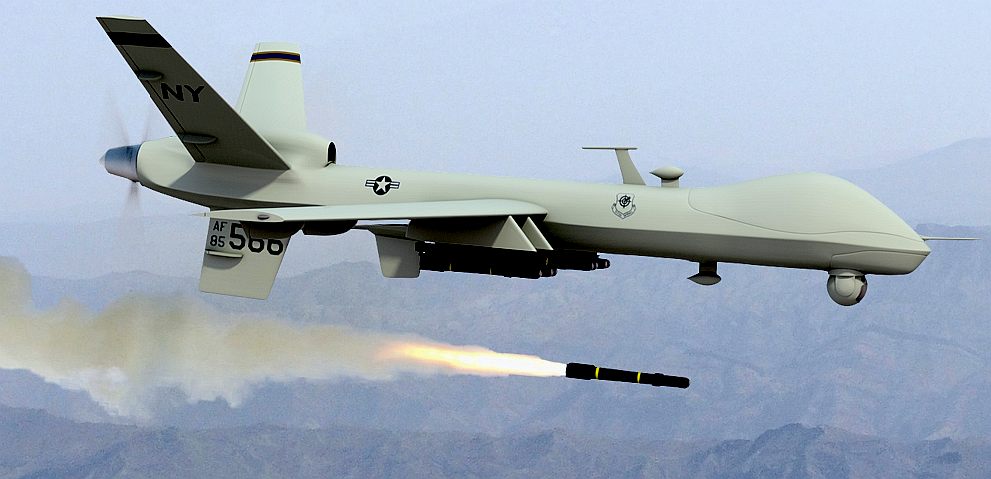
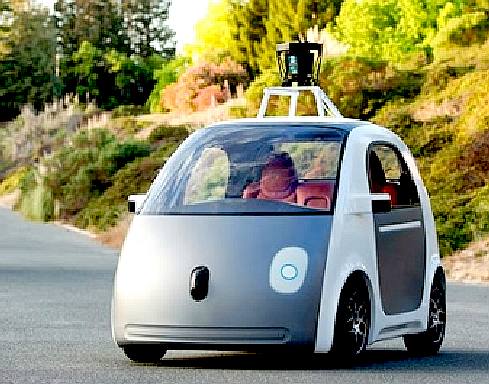
UAVs
have been approved by the FAA for civilian operations, crop dusting,
border controls and film making. GOOGLE - Are streets ahead with
autonomous cars that have a 100% safety track record at time of
publication. So why are ships so different?

UNMANNED
SHIPS, FEBRUARY 2014
Rolls-Royce has been working on hardware and software systems designed to turn the giant cargo ships that are responsible for 90 percent of intercontinental world trade into semi or fully autonomous
robots. The company says that these drone ships would be safer and more efficient than manned ships, but the shipping industry isn't buying it.
Rolls-Royce’s Blue Ocean development team, which is leading the project, says that taking
humans off of ships (and removing all of the human-related infrastructure, like crew quarters, heating and air conditioning, water purification and storage, etc.) would lead to ships that weigh 5 percent less and would use up to 15 percent less fuel. Additionally, the average cargo ship costs between US $3,000 and $4,000 per day in crew operating expenses alone.
To keep humans in the loop somewhere, Rolls-Royce is also creating on a prototype virtual reality display system that gives a captain (or whatever you call someone in charge of a ship when they're not actually on said ship) 360-degree views from a virtual bridge. The captain can hop from virtual bridge to virtual bridge, theoretically overseeing many different ships all at once through remote supervised autonomy.
While unmanned cargo ships are currently illegal, Rolls-Royce is optimistic that "the
technology is at the level where we can make this happen, and society is moving in this direction."
Unfortunately, making this happen is not going to be easy. It's not because the technology isn't there, but rather because humans have been in control of ships for so long that there's a lot of resistance to changing that, mostly surrounding what seems to be an implicit belief that it's just not something that's realistically possible to execute safely.
Unmanned ships should be considered in the same terms as we consider unmanned cars and other unmanned systems. This is a big "should," because it's not the way it works in practice, but still: what we should be asking is not how safe we can make an unmanned ship, but whether we can make an unmanned ship as safe or safer than a manned one. If we can cross that threshold, then we should be willing to go the unmanned route, especially if there are significant additional benefits. And considering that (as with just about everything) human error causes most maritime accidents, there's potential to make sea travel much safer than it is today.
Humans, strictly speaking, are absolutely awful at things like driving cars and steering ships for long periods of time, because it's boring, we're lazy, and sooner or later we get tired and stop paying attention. We just have to get over the knee-jerk reaction that humans can do a better job at it than an
autonomous system. As one maritime standards association member put it, "Can you imagine what it would be like with an unmanned vessel with cargo on board trading on the open seas? You get in enough trouble with crew on board."
Er, yeah, that's kind of the point, isn't it? Humans cause trouble. Computers don't. Or at least, when they cause trouble, they do so in ways that are often predictable, and if they do manage to screw up, other
computers can stop them before anything really bad happens. If all else fails, and something really bad does happen, you can go back and figure out exactly why it happened and prevent it from happening again. That's one of the advantages of technology, but not everyone agrees:
“It cannot and will never replace the eyes, ears, and thought processes of professional seafarers,” Dave Heindel, chairman of the ITF’s seafarers’ section in
London, said in [a statement emailed to
Bloomberg]. “The human element is one of the first lines of defense in the event of machinery failure and the kind of unexpected and sudden changes of conditions in which the world’s seas specialize. The dangers posed to the environment by
unmanned vessels are too easily imagined.”
Now, I'm not a sailor, and people who know more about this sort of thing than I do should feel free to correct me on this, but I have to imagine that the world's seas offer conditions that are no more complex, and potentially far less complex, than the conditions that you'd find driving around downtown San Francisco during rush hour. Furthermore, we already know that sensors (like
radar) are better than humans at detecting other ships and obstacles in the water, especially in the dark or in bad weather.
There's an obvious path forward from here: do what Google did with its autonomous car program. Make the ships autonomous, but keep a human behind the wheel until we've built up some confidence in the technology. Perhaps we gradually decrease the dependence on crew, and increase opportunities for teleoperation. And maybe it'll never make sense to completely remove
humans from ship operations, but significantly reducing the crew to improve both safety and efficiency at the same time certainly sounds like a good idea to me.
ACADEMIA
Currently the debate is more academic than operational, said Peter Sand, an analyst at the Bagsvaerd, Denmark-based Baltic and International Maritime Council, whose members control about 65 percent of the global fleet. None of them have raised the question of drone ships with the trade group, he said.
Levander of Rolls Royce is accustomed to chilly receptions. When he broached the subject at an industry conference in London last May, the audience audibly scoffed, and other speakers on Levander’s panel dismissed the idea.
“If everybody in the industry would say, ‘Yes, this is the way to go,’ then we are too late,” Levander said. “I expect ship owners to be conservative, but it will change.”
The Bloomberg reporter and editor on this story are: Isaac Arnsdorf in New York
iarnsdorf@bloomberg.net and Millie Munshi at
mmunshi@bloomberg.net
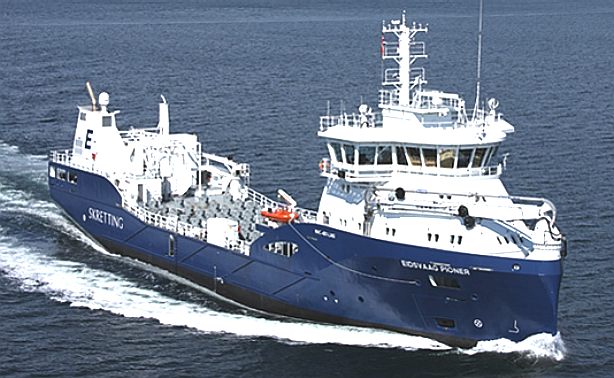
HISTORY
The
company founded by Henry Royce and Charles Rolls
in 1906 has come a long way based on quality engineering.
Diversification in terms of motive power has developed past the piston
engine, through gas turbines to nuclear power. Rolls-Royce has traced its roots in the marine industry back as far as 1831 -
from the controllable pitch propeller, tunnel thruster and nuclear propulsion for Royal Navy
submarines - to marine aero-derivative gas turbines,
waterjets and innovative
offshore vessel designs.
SHIP
DESIGN
Rolls
Royce are investing in ship design research and development, which is the
key to staying ahead. Their focus is on energy efficient designs optimised for
a customer's operating conditions. This inevitably centers about hull hydrodynamics and
an effective propulsion system for improved efficiency, with reduced operating costs and emissions.
Overview
Rolls
Royce provide a wide range of innovative and robust ship designs with
integrated system solutions for the offshore, merchant , coastguard and
naval sectors.
Systems
solutions
Efficient
gas and/or diesel powered propulsion systems are designed, developed and
integrated for offshore vessels, smaller merchant vessels as well as
fishing and other specialized vessels.
Offshore
vessels
A
wide range of rugged and efficient designs are available for the offshore
sector from the well known UT-Design family, that was originally launched
in the mid 1970s.
Merchant
vessels
Our
range of innovative and efficient merchant designs continues to grow. It
now includes LNG carriers, product tankers, cargo carriers and ropax
vessels.
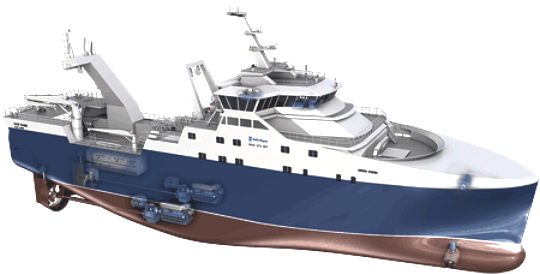
Fishing
& research vessels
Our
focus is safe and efficient designs with low noise and vibration levels -
factors that make our NVC-Designs adaptable to suit a broad range of
fishing requirements.
Coastguard,
OPV & EEZ vessels
Based
on our proven UT-Designs these vessels are suitable for a variety of
tasks, such as patrolling, fisheries protection, emergency stand-by,
pollution control, fire-fighting, salvage and towing.
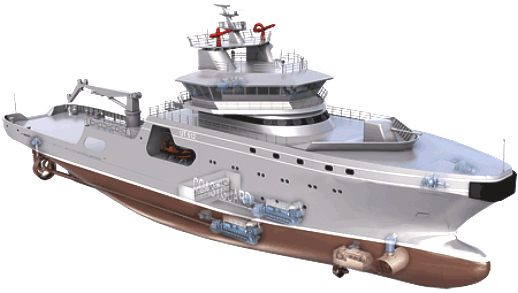
ROLLS
ROYCE AUTOMATION
RR
claim that their automation and control solutions is a range suitable for virtually every vessel
type, starting at the ship’s bridge and the human machine interface, with ergonomic control levers and joysticks, visual displays and alarms.
The
ship's systems receive commands from the bridge personnel for propulsion and
to operate other ship equipment, verify that the machinery has responded and indicate the status of the various
systems.
Integrated
bridge systems
Controls
multiple functions and includes bridge and engine control room consoles
and displays, plus Captain’s chair with controls in armrests.
Propulsion
controls
Control
equipment for Rolls-Royce propulsion equipment installations - engines,
controllable pitch propellers, tunnel and azimuth thrusters, rudders and waterjets.
Automation
systems
Tailored
for a wide range of control and monitoring functions, including auxiliary
machinery and tank monitoring.
Positioning
systems
User
friendly joystick or DP1 and DP2 systems to accurately maintain ship
position, or track despite wind, waves and current.
NUCLEAR
Rolls-Royce Marine Power Operations Limited,
is a subsidiary of Rolls-Royce plc, operates three sites licensed to handle nuclear material, two of which are at Raynesway in Derby, UK.
The Manufacturing Site was licensed in August 1960 and deals with processing of uranium fuel and the fabrication of Rolls-Royce PWR nuclear reactor cores for Royal Navy
submarines such as the new
Astute-class.
The Neptune/Radioactive Components Facility Site was licensed in November 1961 and houses the Neptune test reactor which is used to conduct experiments on reactor cores.
It was created as a joint company in 1954 with the name Rolls-Royce and Associates; the associates being Vickers, Foster Wheeler and later Babcock and Wilcox. It changed its name on 15 January 1999 to Rolls-Royce Marine Power Operations Limited and is part of the marine business of Rolls-Royce
plc.
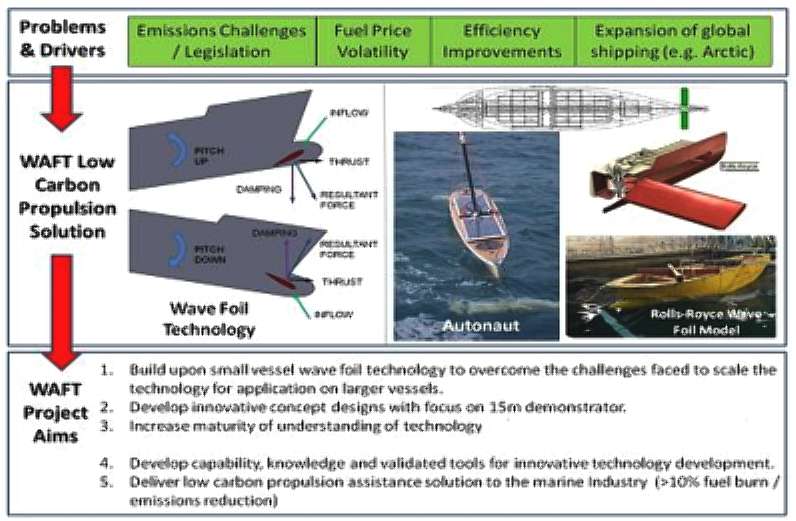
WAFT
- a project to reduce fuel consumption by using a wave foils to, supported by
the Technology
Strategy Board as part of their vessel efficiency drive - looking for
5-25% improvements in hull performance.

CONTACTS
Bristol (Marine gas turbine support)
Tel +44 117 974 8500
Fax +44 117 979 2607
Dartford (Marine Equipment Sales and Service)
Tel: +44 1322 312028
Fax: +44 1322 312054
Portsmouth (Marine Electrical Systems)
Tel: +44 23 9231 0000
Fax: +44 23 9231 0001
Bristol (Naval)
Tel: +44 117 974 8500
Fax: +44 117 979 2607
Derby (Submarines)
Tel: +44 1332 661 461
Fax: +44 1332 622 935
Dunfermline (Motion control and UK service
centre)
Tel: +44 1383 82 31 88
Tel: +44 7831 167138 (24hr emergency)
Fax: +44 1383 82 40 38
Newcastle
(Michell Bearings)
Tel: +44 191 273 0291
Fax: +44 191 272 2787
Newcastle (Replenishment-at-sea systems)
Tel: +44 191 256 2800
Fax: +44 191 256 2801
Email: marineinfo@rolls-royce.com
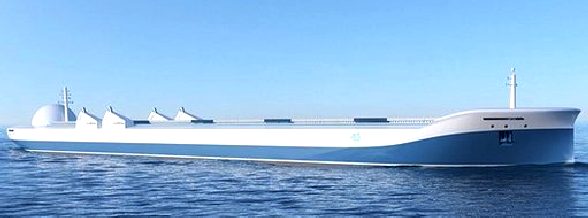
LINKS
Planning-for-a-future-of-robot-ships
NATO
Aegis missile system
BBC
news technology
Driverless-cars-meet-captainless-ships-autonomous-vehicles-to-take-to-the-sea/
Autonomous-cargo-vessels-could-set-sail-without-crew-under-watchful-eye
Unmanned
autonomous ships
Unmanned-cargo-ships-face-industry-resistance-are-a-good-idea-anyway
Rolls-Royce
environmental_solutions
Rolls-Royce_Marine_Power_Operations
Rolls-Royce
ship_design_systems
Rolls
Royce Waterspeed
Hagel-expands-on-reservations-about-littoral-combat-ship
Rolls-Royce
Iinventors_tech_licensing
http://www.rolls-royce.com/
http://www.rolls-royce.com/contact/inventors_tech_licensing/index.jsp
http://www.safety4sea.com/planning-for-a-future-of-robot-ships-19611
http://www.bbc.co.uk/news/world-us-canada-26346903
http://www.marinelink.com/news/alternative-rollsroyce374974.aspx
http://www.bbc.co.uk/news/technology-26438661
http://singularityhub.com/2014/03/18/driverless-cars-meet-captainless-ships-autonomous-vehicles-to-take-to-the-sea/
http://www.unmanned-ship.org/munin/about/the-autonomus-ship/
http://www.bloomberg.com/news/2014-02-25/hagel-expands-on-reservations-about-littoral-combat-ship.html
http://www.rolls-royce.com/marine/about/environmental_solutions/
http://en.wikipedia.org/wiki/Rolls-Royce_Marine_Power_Operations
http://www.rolls-royce.com/marine/ship_design_systems/
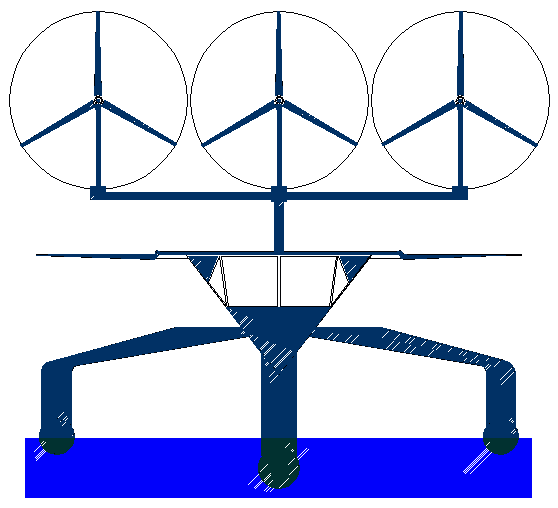
|









